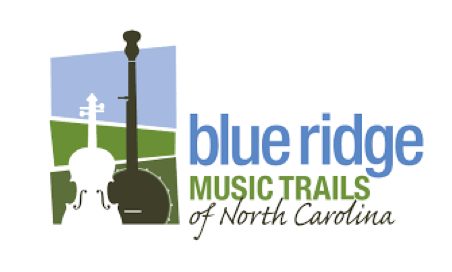Scruggs at 100: Don’t Get Above Your Raisin’
Rob McCoury can sum up banjo legend Earl Scruggs in one simple yet seismic sentence.
“Banjo at its finest,” said McCoury, a lauded Grammy-winning banjoist for the Del McCoury Band and the Travelin’ McCourys.
Earlier this year, an array of bluegrass icons overtook the Malcolm Brown Auditorium in Shelby for a celebration of not only the 100th birthday of the late Scruggs, but also the 10-year anniversary of the Earl Scruggs Center located in the heart of the community.
“[Earl] took that style of banjo that he heard growing up around this part of the country and perfected it,” McCoury said. “I’ve heard his music thousands of times, but I always hear something different that I missed before — when you hear him, you know immediately it’s Earl Scruggs.”
Backstage at the auditorium, McCoury was surrounded by a “who’s who” of the bluegrass world, past and present, all paying tribute to the legend and lore that is Earl Scruggs — Jerry Douglas, Kristin Scott Benson, Tony Trischka, Ronnie McCoury, Jason Carter, and many more.
“[Earl is] perfection — he created this vernacular for us that still serves us so well,” Benson said. “We could never repay what he gave to us.”
Born and raised in Cleveland County, Scruggs revolutionized the banjo. Whereas previous fingerpicking styles like clawhammer focused on down-picking (using the thumb and middle or index finger) on the five-string instrument, “Scruggs Style” was a three-finger approach utilizing the thumb, middle and index, resulting in a rapid picking tempo known as “rolls.”
“People were playing three-finger style banjo before him, but no one did what he did — he invented a whole new style of playing,” Trischka said.
When the “Father of Bluegrass” Bill Monroe was searching for a new sound in the 1920s and 1930s — this blend of Dixieland jazz, blues and roots music — he was slowly creating what would eventually be known as bluegrass in the 1940s. Monroe’s famous adage — “if you can play my music, you can play anything” — still rings true today.
“Bluegrass is an improvisation music much like jazz is,” Douglas said. “And it’s really hard to come from any other genre to bluegrass music because it’s so physical and so geographical. [With] bluegrass, you learn syncopation, improvisation, scales, different ways of looking inside these songs with your own personality.”
But, it wasn’t until Scruggs was introduced as the newest member of Bill Monroe & The Blue Grass Boys on the Grand Ole Opry in December 1945 when the gas was tossed onto the musical fire that Monroe had sparked years earlier.
“That first night [Earl] played the Opry, they were held over for five encores — people just couldn’t believe what they were hearing,” Trischka said. “You could make an arguable point that by having Earl in the band, that’s what made it bluegrass.”
Throughout the “100 Years of Earl Scruggs” celebration, dozens of local and regional musicians got behind the microphone alongside the marquee acts. Zooming up and down the fretboard, an endless cacophony of musical notes echoed throughout the auditorium and into the cold, quiet hills of Appalachia.
“When Earl joined Bill Monroe & The Blue Grass Boys, and then later joined up with [guitarist] Lester Flatt to form Flatt & Scruggs, that sort of set up the pinnacle for bluegrass,” said Mary Beth Martin. “And what speaks to Earl’s legacy is that people are still trying to reach that pinnacle, still trying to be like Earl and emulate him.”
Executive director of the Earl Scruggs Center, Martin oversees a state-of-the-art two-story museum dedicated to the preservation and perpetuation of the story and music of Scruggs, all of which are housed in the historic former Cleveland County Courthouse.
“Since the center opened in 2014, it’s really helped to revitalize this community around Earl’s legacy,” Martin said. “It’s much more than just celebrating Earl, it’s also celebrating this community and this county where he was raised — everything that people poured into him to become the musician that he was.”
To note, the center is also one of the main partners behind the annual Earl Scruggs Music Festival, which is held at the Tryon International Equestrian Center in Mill Spring. The 2024 installment will take place Labor Day Weekend with marquee acts Tanya Tucker, Old Crow Medicine Show, Yonder Mountain String Band and Marty Stuart & His Fabulous Superlatives atop the bill.
For Trischka, who has devoted his life to the banjo — it’s history, legacy and evolution — he continually finds inspiration, personally and professionally, in a famous quote from Earl Scruggs: “You can’t encore the past. If I see a bright light shining out there, I want to go towards it.”
“In [Earl’s] later years, he played with his sons in the [groundbreaking] Earl Scruggs Revue, added drums in his group and really stretched the boundaries,” Trischka said. “He was constantly being inspired by other musicians and genres, even playing with Elton John and Sting — he was a sponge who wanted to always learn and play with others.”
“[Earl] set such a high bar, not just with how he played, but also the type of musician he was,” Martin added. “He’s an example of what bluegrass is today, which is not being static — constantly growing and evolving.”
Enjoy more of our Down the Road – Bluegrass and Old-Time Music Guide here.








 Bob Peck, Mountainwater Films
Bob Peck, Mountainwater Films